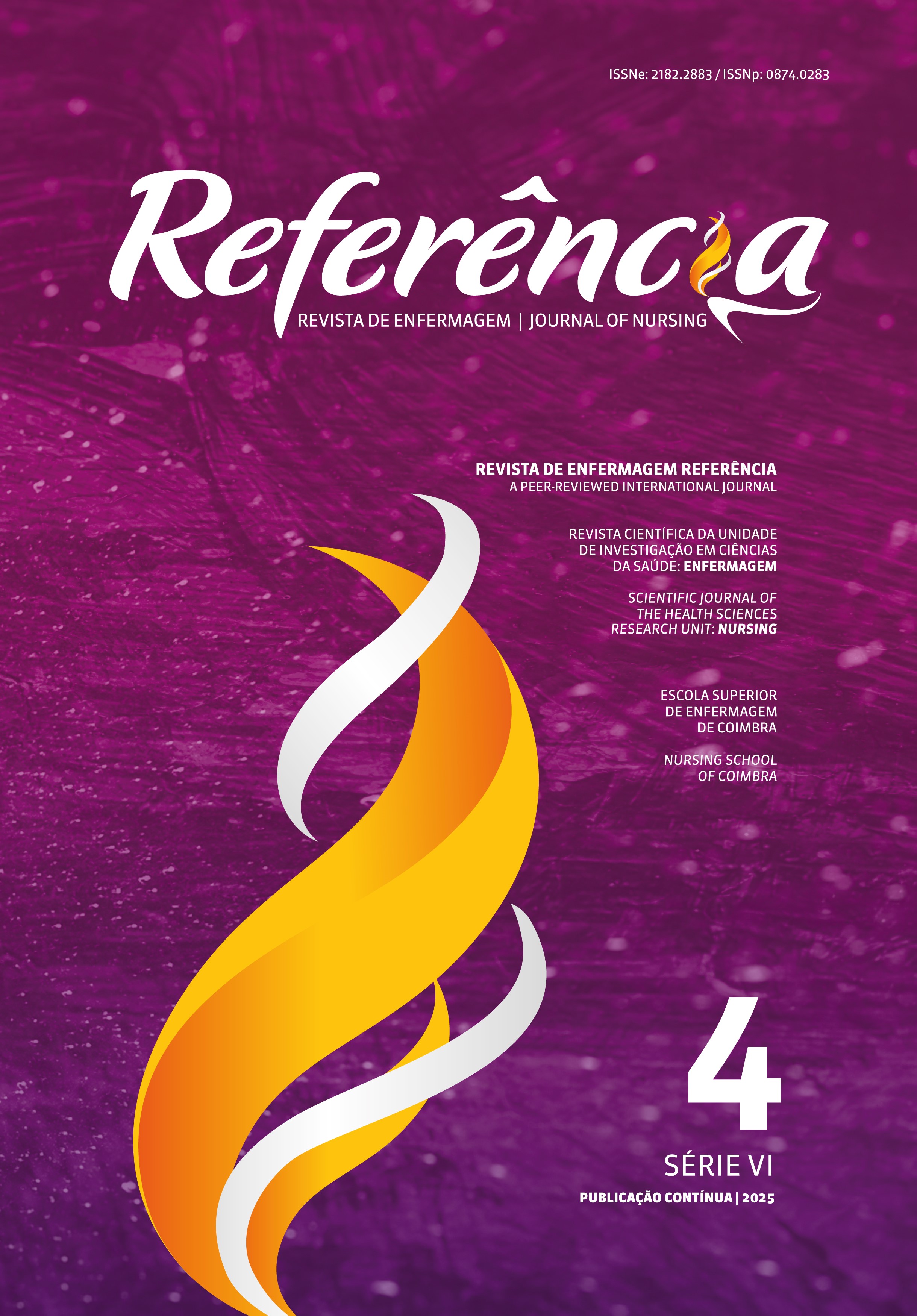Factors influencing condom misuse from the perspective of young university students
DOI:
https://doi.org/10.12707/RV21043Keywords:
condoms, young adult, sexually transmitted infections, risk-taking, unsafe sexAbstract
Background: The sexual risk-taking behaviors of young people regarding Sexually Transmitted Infections (STIs) are associated with sexual debut, partner variability, casual sex activities, (lack of) use of condoms, and substance abuse.
Objective: To identify the factors influencing condom misuse from the perspective of young university students.
Methodology: A descriptive qualitative study was conducted at a private university in Rio de Janeiro, Brazil, with 30 young university students participating in three focus groups. Data were analyzed using the lexical analysis technique and IRaMuTeQ software.
Results: The following five classes emerged: alcohol use as a determinant of risky behaviors; condom misuse associated with the risk of infection; lack of information on STI prevention; and condom use. Participants reported using condoms inconsistently and being more concerned about the occurrence of an unplanned pregnancy.
Conclusion: University students’ sexual risk-taking behaviors reveal individual and social vulnerabilities and highlight the need to develop efficient health education and therapeutic interventions strategies.
Downloads
References
Andrade, S. S., Zaccara, A. A., Leite, K. N., Nunes, M. L., Coelho, H. F., & Oliveira, S. H. (2016). Male and female condoms: What do women of a subnormal agglomerate know. Investigación y Educación en Enfermería, 34(2), 271-279. https://doi.org/10.17533/udea.iee.v34n2a06
Junior, G. A., & Gaya, C. M. (2015). Implications of the use of alcohol, tobacco and other drugs in the university student’s life. Revista Brasileira em Promoção da Saúde, 28(1), 67-74. https://periodicos.unifor.br/RBPS/article/view/3166/pdf_1
Bertoli, R. S., Scheidmantel, C. E., & Carvalho, N. S. (2016). College students and HIV infection: A study of sexual behavior and vulnerabilities. DST: Jornal Brasileiro de Doenças Sexualmente Transmissiveis, 28(3), 90-95. http://www.dst.uff.br/revista28-3-2016/ DST%20v28n3_IN_90-95.pdf
Darre, T., Saka, B., Walla, A., Ekouevi, K. D., & Folligan, K. (2018). Sexuality, sexually transmitted infections and contraception among health sciences students in university of Lome, Togo. BMC Research Notes, 11(1), 808. https://doi.org/10.1186/s13104-018-3923-3
Guo, C., Wen, X., Li, N., Wang, Z., Chen, G., & Zheng, X. (2017). Is cigarette and alcohol use associated with high-risk sexual behaviors among youth in China? The Journal of Sexual Medicine, 14(5), 659-665. https://pubmed.ncbi.nlm.nih.gov/28411067/
Gutierrez, E. B., Pinto, V. M., Basso, C. R., Spiassi, A. L., Lopes, M. E., & Barros, C. R. (2019). Factors associated with condom use in young people: A population-based survey. Revista Brasileira de Epidemiologia, 22, e190034. http://dx.doi.org/10.1590/1980-549720190034
Heredia, L. P., Ramirez, E. G., Pereira, C. F., & Vargas, D. (2017). Effect of sociodemographic variables and vulnerability in alcohol use in university women. Texto Contexto Enfermagem, 26(3), e6860015. https://doi.org/10.1590/0104-07072017006860015
Hurley, E. A., Brahmbhatt, H., Kayembe, P., Busangu, M. A., Mabiala, M. A., & Kerrigan, D. (2017). The role of alcohol expectancies in sexual risk behaviors among adolescents and young adults in the Democratic Republic of the Congo. Journal of Adolescent Health, 60(1), 79-86. https://doi.org/10.1016/j.jadohealth.2016.08.023
Lakunchykova, O. P., & Burlaka, V. (2017). Correlates of HIV and inconsistent condom use among female sex workers in Ukraine. AIDS and Behavior, 21(8), 2306-2315. https://doi.org/10.1007/s10461-016-1495-6
Lima, C. A., Maia, M. F., Magalhaes, T. A., Oliveira, L. M., Reis, V. M., Brito, M. F., Pinho, L., & Silveira, M. F. (2017). Prevalence and factors associated with health risk behaviours in university students on the north of Minas Gerais. Cadernos de Saúde Coletiva, 25(2),183-191. https://doi.org/10.1590/1414-462X201700020223
Manoel, A. L., & Trevisol, F. S. (2017). Sexual behavior of students of medicine of Brazil: A multicenter study. DST: Jornal Brasileiro de Doenças Sexualmente Transmissiveis, 29(2), 44-49. http://www.jbdst.inpub.solutions/publicas/jbdst/arquivos/15091255997WH5VWSXQJ5NIRW9FNERIGTW-4JX1HO/2177-8264-JBDST-29-02-00044.pdf
Nascimento, E. G., Cavalcanti, M. A., & Alchieri, J. C. (2017). Adherence to condom use: The real behavior in the Northeast of Brazil. Revista de Salud Publica, 19(1), 39-44. https://doi.org/10.15446/rsap.v19n1.44544
Obembe, T. A., Adebowale, A. S., & Odebunmi, K. O. (2017). Perceived confidence to use female condoms among students in tertiary institutions of a Metropolitan City, Southwestern, Nigeria. BMC Research Notes, 10, 398. https://doi.org/10.1186/s13104-017-2730-6
Pinchoff, J., Boyer, C. B., Mutombo, N., Chowdhuri, R. N., & Ngo, T. D. (2017). Why don’t urban youth in Zambia use condoms? The influence of gender and marriage on non-use of male condoms among young adults. PLoS ONE, 12(3), e0172062. https://doi.org/10.1371/journal.pone.0172062
Ramos, R. C., Spindola, T., Oliveira, C. S., Martins, E. R., Lima, G. D., & Araujo, A. S. (2020). Practices for the prevention of sexually transmitted infections among university students. Texto & Contexto-Enfermagem, 29, e20190006. https://doi.org/10.1590/1980-265x-tce-2019-0006
Santana, E. R., Pimentel, A. M., & Veras, R. M. (2020). The illness experience at university: Narratives of students from the health field. Interface, 24, e190587. https://doi.org/10.1590/Interface.190587
Souza, L. K. (2020). Recomendacoes para a realizacao de grupos focais na pesquisa qualitativa. PSI UNISC, 4(1), 52-66. https://pdfs.semanticscholar.org/a04d/e5b67829a2895b76780d34523ee3ace9aee0.pdf?_ga=2.193480809.530889210.1640089293-1978506208.1640089293
Spindola, T., Araujo, A. S., Brochado, E. J., Marinho, D. F., Martins, E. R., & Pereira, T. S. (2020). Sexual practices and attitudes of university students towards prevention of sexually transmitted infections. Enfermería Global, 19(2), 109-40. https://doi.org/10.6018/eglobal.382061
World Health Organization. (2016). Global health sector strategy on sexually transmitted infections, 2016-2021. https://www.who.int/reproductivehealth/publications/rtis/ghss-stis/en/
Yared, A., Sahile, Z., & Mekuria, M. (2017). Sexual and reproductive health experience, knowledge and problems among university students in Ambo, central Ethiopia. Reproductive Health, 14(1), 41. https://doi.org/10.1186/s12978-017-0302-9






















